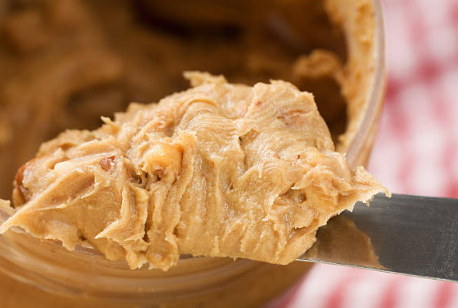Peanuts are a great source of plant-based protein, heart-healthy fats, and essential minerals like potassium and magnesium. But many commercial peanut butters contain added sugars, hydrogenated oils, and preservatives to enhance flavor, texture, and shelf life—ingredients that can impact your health.
Added sugars and hydrogenated oils can increase your intake of saturated fats and empty calories. To keep things healthy, choose peanut butter made with just two ingredients: peanuts and salt.

1. Avoid Brands with Added Sugar
Consuming too much added sugar over time raises your risk for diabetes, obesity, and heart disease. The American Heart Association (AHA) recommends limiting added sugar to no more than 25 grams per day for women and 36 grams for men.
Even foods that don’t taste sweet—like peanut butter—can contain added sugars. While peanut butter must be at least 90% peanuts, many brands include 1–6% added sugar to improve shelf life and flavor.
Natural peanut butter (made from just peanuts and salt) contains about 1 gram of sugar per serving, while more processed versions may contain up to 3 grams. A little here and there adds up quickly.
2. Skip the Preservatives
Preservatives and stabilizers are often added to improve peanut butter’s texture and shelf life. These can include sugars like sucrose or molasses, and fats like hydrogenated oils or lecithin.
The healthiest peanut butters stick to just peanuts and salt—nothing more.
3. Avoid Hydrogenated Oils
Hydrogenated oils are added to prevent peanut butter from separating and to give it that thick, creamy consistency. But partially hydrogenated oils are a major source of trans fats, which are harmful and considered unsafe by health experts. Even fully hydrogenated oils are high in saturated fat, which should be limited.
Some popular peanut butter brands contain 1–5% hydrogenated oil, mainly to keep the texture smooth and shelf-stable.
4. What About Lecithin?
Lecithin is sometimes added as an emulsifier to keep peanut butter smooth and prevent natural separation. While some people worry about food additives, lecithin is generally recognized as safe and used in very small amounts.
It may even offer health benefits, such as supporting cholesterol control. Still, because lecithin is often found in peanut butters that also contain sugar and hydrogenated oils, it’s best to choose a peanut butter with just peanuts and salt.
How to Make Peanut Butter at Home
Making your own peanut butter gives you complete control over the ingredients. Choose your favorite kind of peanuts—dry roasted, lightly salted, or raw—and add as much or as little salt as you like. All you need is a food processor:
-
Add roasted peanuts to a food processor (about 3 cups for a 7-cup processor). Add a pinch of salt if the peanuts are unsalted.
-
Process for 8–10 minutes, pausing to scrape the sides every minute or so, until the mixture becomes smooth and creamy.
-
Transfer to a jar with a tight lid. Store the jar upside down to let the oils rise to the top naturally over time.

Are Other Nut Butters Healthier?
Nuts and seeds are excellent for heart health, weight control, and blood sugar management. They’re key parts of healthy eating patterns like the Mediterranean and DASH diets.
Among nut options, peanuts, almonds, and pistachios are the highest in protein—peanuts top the list with 7g per serving, while almonds and pistachios offer around 6g each.
Other nut butters offer different nutritional benefits:
-
Macadamia nut butter is high in monounsaturated fats, which are great for brain health.
-
Walnut butter provides heart-healthy omega-3 fatty acids.
Other popular nut butter options include:
-
Almond butter
-
Cashew butter
-
Walnut butter
-
Macadamia nut butter
-
Pistachio butter
If you’re making your own nut butter, try blending two or three types of nuts. Some nuts are oilier and softer, which makes them easier and faster to process.
